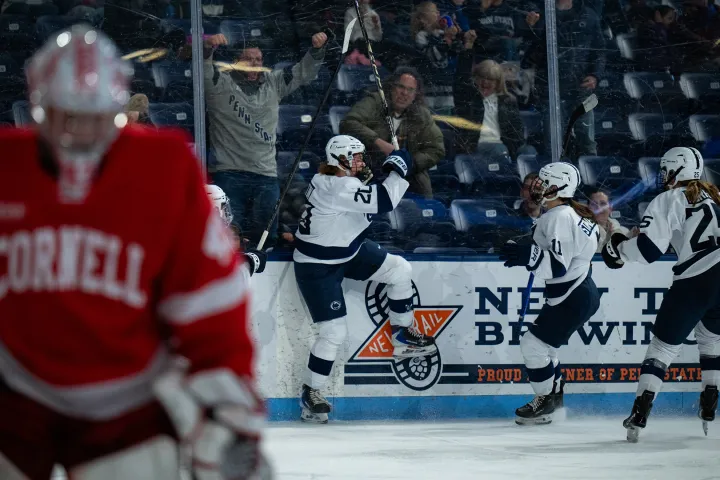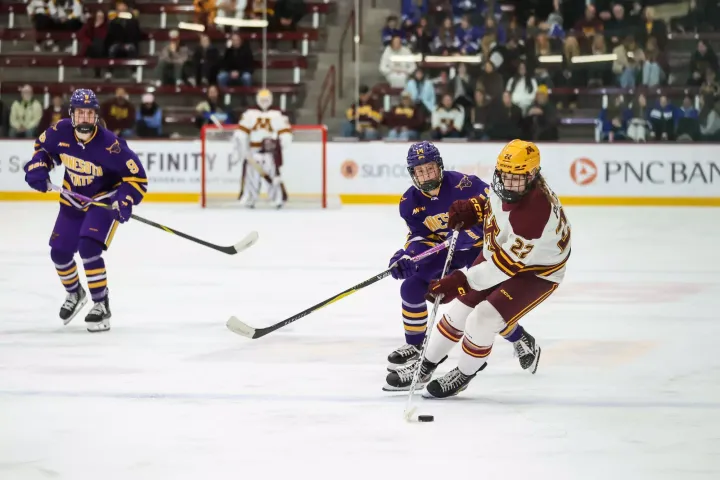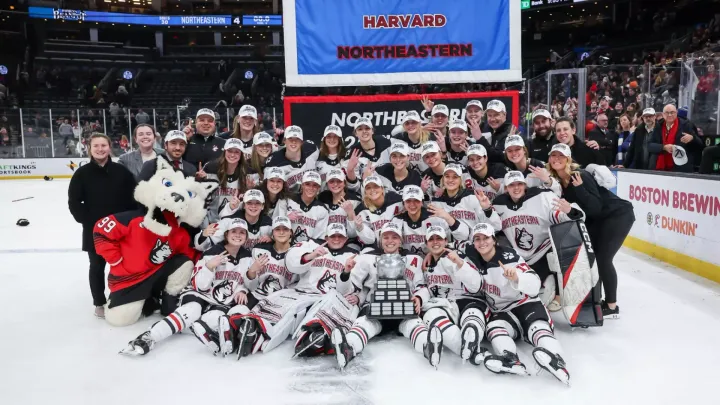Keller and Flanagan an impressive top pair for Team WSF
Together at BC, on Team USA, and now on Team WSF
Time on ice data isn’t publicly available for the PWHPA’s 2021 Secret Dream Gap Tour but if it was there’s no doubt that Kali Flanagan and Megan Keller’s names would be right at the top of the list in average ice time. Together, they are the top pair for the New Hampshire hub’s Team Women’s Sports Foundation and have been absolute workhorses for their squad through the first four games of the tour.
Flanagan and Keller have been indispensable for Team WSF. They kill penalties, they prowl the blue line on the power play, and they are tasked with stymying Team adidas’ offense, which features some of the most dangerous forwards on the planet. Team Women’s Sports Foundation has been outscored 18-9 through four games but that is not a result of poor play from the team’s top d-pair. In fact, it’s hard to imagine where this team would be without them.
Here are the individual 5v5 transition stats for the @PWHPA New Hampshire Region players from today's game vs Minnesota.
— Mikael Nahabedian (@hunterofstats) March 7, 2021
Keller was excellent on exits today. Decker was once again her team's leader in terms entries. Solid game for Flanagan at the blue line for entry denials. pic.twitter.com/nYrF2IevPx
Much of what Flanagan and Keller bring to the table for New Hampshire hasn’t shown up in the box score, although it’s worth noting that Keller leads Team WSF’s blue line in scoring with a pair of assists. They disrupt plays in their own zone, move the puck well in the offensive zone, and are the kindling that has given New Hampshire a counter-attack that has found a way to burn Team adidas on a few occasions. It’s difficult to overstate how essential Flanagan and Keller are to Team Women’s Sports Foundation’s attack and defense in the transition game.
Mikael Nahabedian has been tracking PWHPA transition stats this season. Per his data, no defender on New Hampshire has denied more 5-on-5 zone entries than Flanagan (16) and no defender on either team has facilitated more controlled zone exits than Keller (35) — Flanagan is second (28). This data gives us insight into how often the pair are tasked with getting the puck out of their own end and how often they excel. That’s a big deal for New Hampshire, considering how often they rely on the counter-attack and creating chances when they have numbers going the other way, often with the puck on the stick of Brianna Decker or Amanda Kessel.
One of the secrets behind the success of the pairing is familiarity. They’ve won gold at a Worlds (2017) and an Olympics together and were teammates for the entirety of their NCAA DI careers at Boston College. Flanagan and Keller know they can trust each other, and it shows. Their games also complement each other.
Flanagan is a disciplined, mobile, well-rounded defender who rarely makes mistakes in her own zone. During her career at BC, Flanagan took just 11 penalties in 157 games. Like so many top players in college hockey, she flourished after earning more ice time and opportunity following a promising freshman campaign in 2014-15. Although her offensive upside is overshadowed by Keller’s, Flanagan’s puck skills have been underrated because of some of the blueliners she’s played with on the Eagles and Team USA.
Keller is more dynamic with the puck than Flanagan, especially in the offensive zone, and is a more physical presence with her 5-foot-11 frame. She scored 41 goals in between her sophomore and senior seasons in a total of 114 games. Those numbers are just preposterous for a defender. Keller also was a huge factor in Team USA’s gold medal win in Pyeongchang, clocking in with an average TOI/GP of 21:26 and earning two assists in five games.
Make it a four point game for Brianna Decker 🔥 pic.twitter.com/FKftwdcYgY
— Shayna (@hayyyshayyy) March 1, 2021
“I absolutely love playing with Meg,” Flanagan told The Ice Garden after Saturday’s game. “We’ve kind of done it all together ... being able to play with here her as well has just been awesome. I think we complement each other well. She’s an amazing player and I think we balance each other out a little bit.”
Together, they are the complete package. It’s not a coincidence that Keller and Flanagan were both first-round picks in the 2018 NWHL Draft. They can be trusted at even strength and on the penalty kill against the likes of Hilary Knight, Kendall Coyne Schofield, and Abby Roque and can make things happen in the transition game and on the power play.
Perhaps what stands out the most about the play of Flanagan and Keller is how well they’ve managed against a high-powered offense. Team Women’s Sports Foundation has yet to dress more than five defenders in a game, which means that the top pair must be in the neighborhood of 30 minutes a game. Their workload will be something to keep a close eye on whenever the Dream Gap Tour resumes.
Despite being out-shot in three of the four games of the Dream Gap Tour New Hampshire has never really broken down in their own zone with Flanagan and Keller on the ice. Together, they weather the storm. Moving forward, Team Women’s Sports Foundation needs to find a way to get more offense out of its second and third lines and more consistent play from the rest of the blue line to take some pressure off of its top d-pair. At the end of the day, there’s only so much Flanagan and Keller can do.
Data courtesy of Mikael Nahabedian, HockeyEastOnline.com, IIHF.com, and the author.





Comments ()